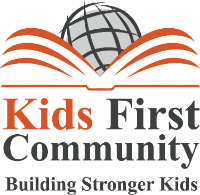In order to be help violent children successfully change their behavior, parents need to understand the nature of the problem. Understanding risk factors which influence the development of violent behavior in children and recognizing it’s early signs are crucial in taking the proper actions for correcting the behavior and preventing it from becoming a serious problem.
What are the factors that influence the development of violent behavior in children?
Violent behavior in children usually comes from a complex combination of personal and environmental factors. Children mimic behavior they see around them so exposure to verbal or physical violence at home is one of the main causes why a child starts expressing their feelings aggressively. Violence among peers, exposure to violence in media, stressful socioeconomic conditions such as poverty, unemployment, divorce, disrespect from parents, or loss of parent’s support can also contribute to the development of violent behavior in children. Sometimes violent behavior in children is a consequence of victimization – bullying; physical or sexual abuse. Violent behavior is inherent and can also be hereditary. An imbalance in brain chemistry, due to some disease or injury, can also cause intense anger, easy frustration, and sudden bursts of violent behavior in children.
What can I do if my child suffers from violent behavior?
-Make sure a child is properly diagnosed. Many parents neglect early warning signs of violent behavior in children (disrespectful behavior toward parents; siblings; peers; other children; teachers, animal cruelty, poor impulse control, reacting to criticism or teasing with extreme uncontrollable anger, decrease in communication and dialogue skills, fixation on feelings of rejection, fascination with fights or weapons) by thinking “it will wear off”, or connecting violent behavior with ADHD. Don’t be quick to make your own evaluations; seek professional help. A trained professional will explore all risk factors, get to the root of problem, and advise accordingly.
-Accept your own responsibility. Sometimes, to help your child, your family, and yourself, you need to reexamine your own behavior. Try not to look at things as a blame game. If a professional suggests you or the whole family need counseling, embrace it as an opportunity to make a better life for yourselves rather than counterproductively blame each other for the current situation. It’s human to err, and the best way to deal with our mistakes is to learn from them and use the opportunity to grow.
-Remain unified as parents. Parenting is most rewarding job but it’s also the most challenging. It can be very frustrating. Children learn by watching how parents, often unintentionally, behave and eventually learn how to manipulate them to get what they want. It is very important both parents remain unified in problem solving. This is helpful and beneficial for the whole family. EX: try avoiding situations where one parent corrects a child’s violent behavior but the other parent fails to do so. Children will use this to “divide and conquer” and it will retard efforts to help your family and bring more unnecessary frustration.
-Be strong. In order to successfully deal with violent behavior in children, you must be patient but consistent with boundaries and firm discipline. Don’t let children’s screaming, crying. or yelling intimidate you or wear you down to the point of letting them have their way. It’s a power struggle and the child needs to understand problems can be solved only through calmed conversation; not through exhibition of violent temperament. Remember, you don’t need to be child’s friend, but you do have to be her/his parent. You will not help your children by giving in. The best way to help them is to show them consequences for their actions. Also, make sure the child knows positive behavior has positive consequences. Use improvements in behavior, no matter how small, to praise a child or to award her/him with something they enjoy. It can be anything from emotional bonding to toys to games to excursion to an amusement park.







